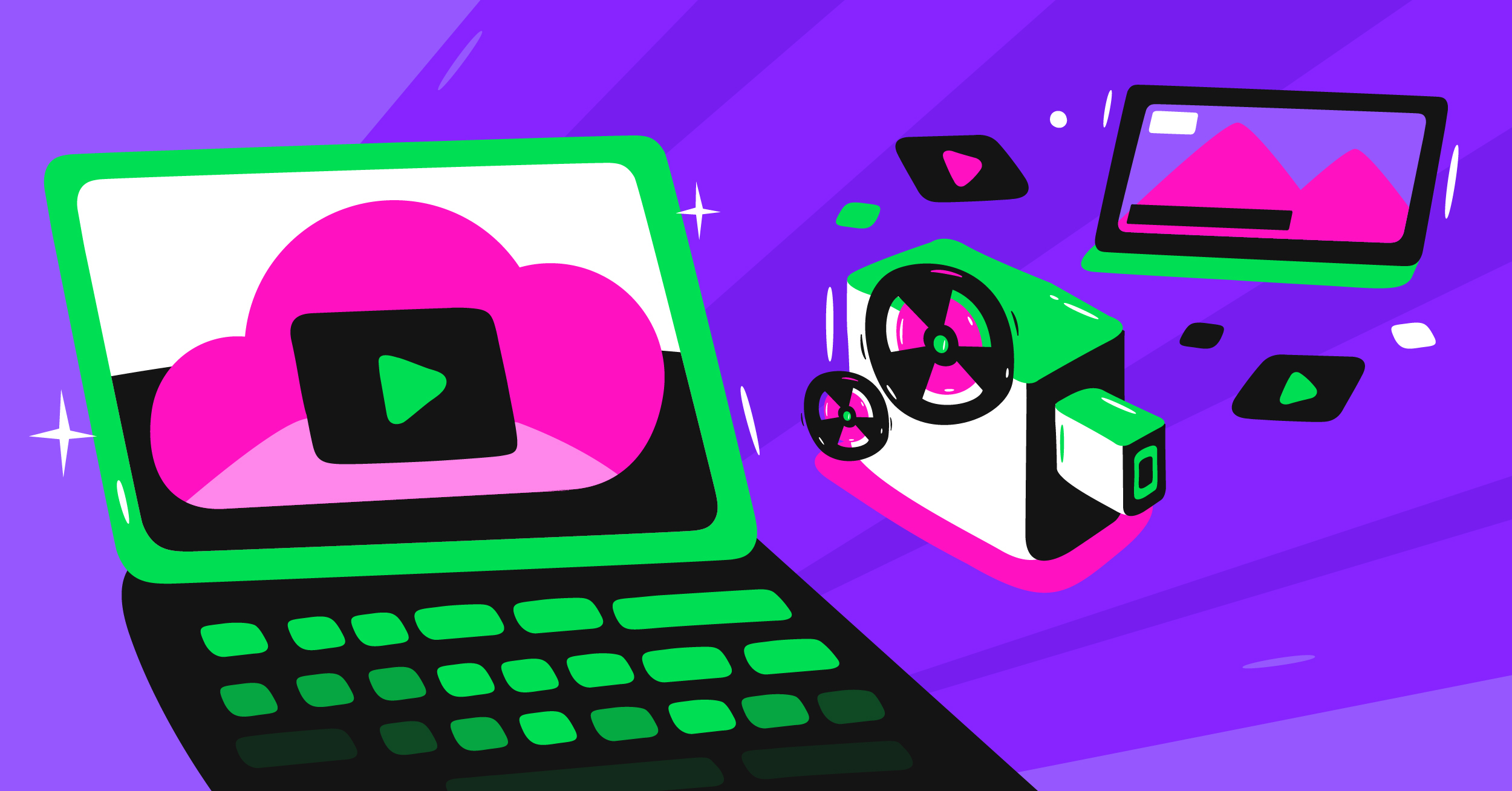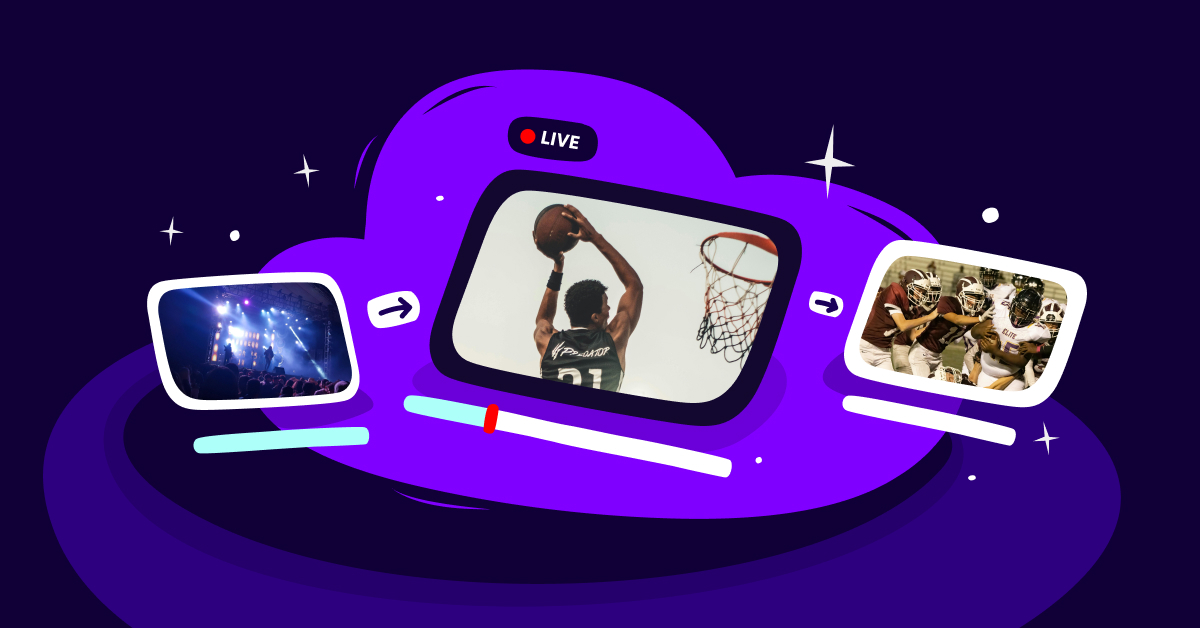Cloud playout is changing how TV and radio stations send out their shows. It uses the internet to store and play content. This new method is different from the old ways of broadcasting.
Cloud-based playout solutions help stations save money and be more flexible. They optimize workflow efficiency, enhance scalability, and facilitate real-time content scheduling. Stations can start new channels faster, reach more viewers, and seamlessly manage content across different platforms.
This blog will explore how cloud playout has changed broadcasting. We’ll look at what it is, how it works, and its benefits. We’ll also discuss some challenges and future trends.
Cloud playout is making big waves in the broadcasting world. It’s helping stations adapt to new viewer habits. Let’s dive in and see how this technology is reshaping the industry.
What is Cloud Playout?
Cloud-based playout is a way to broadcast TV and radio shows using the internet. It stores content online instead of on physical machines. This system can schedule and play programs automatically.
With cloud playout, broadcasters can manage their content from anywhere. They don’t need to be in a TV studio. It works for both live shows and pre-recorded programs.
This technology uses cloud servers to store and process media files. It can handle various video formats and quality levels. Cloud playout can also add graphics and captions to videos.

Cloud-based technologies enhance flexible remote monitoring capabilities, allowing media professionals to oversee operations from any location. Real-time analytics and monitoring through cloud solutions improve visibility, collaboration, and overall efficiency in content delivery.
One big advantage is that it’s easy to scale up or down. Stations can add new channels quickly when needed. They can also reduce services during slow times without wasting resources.
Cloud playout integrates well with other online tools. This makes it easier to stream content to websites and apps. It’s a flexible solution for today’s diverse media landscape.
How Cloud Playout Technology Works
Cloud playout uses online servers to store and manage media content. These servers are part of a larger cloud infrastructure. They handle tasks like video processing and scheduling.
Cloud-based solutions enhance broadcasters’ flexibility, scalability, and reliability by leveraging cloud technology to seamlessly integrate content creation and distribution while ensuring high quality and efficiency in broadcasting operations.
When a broadcaster uploads a video, the cloud system processes it. This includes converting the file to different formats if needed. The system also checks the video quality and fixes any issues.
Next, the cloud playout service creates a playlist. This playlist is a schedule of when each piece of content will air. It can include live feeds, recorded shows, and ads.
The cloud system sends out the content at the scheduled time. It can broadcast to TV stations, websites, and mobile apps simultaneously. The system adjusts the video quality based on the viewer’s device.
Cloud playout can also add live elements to pre-recorded content. For example, it can insert up-to-date news tickers or weather forecasts. This makes the broadcast feel more current and engaging.
The technology uses smart algorithms to manage bandwidth. This ensures smooth playback even during peak viewing times. It can also switch to backup servers if there’s a problem.
Cloud playout systems often include content management tools. These tools let broadcasters organize their media libraries easily. They can tag videos, create categories, and search for specific clips.
Many cloud playout services offer analytics tools too. These track viewer numbers and engagement rates. Broadcasters can use this data to improve their content and ad strategies.
Security is a key part of cloud playout technology. The systems use encryption to protect content from unauthorized access. They also have features to prevent piracy and illegal streaming.
The Evolution of Modern Broadcasting Technology
Broadcasting has come a long way since the early days of radio and TV. Traditional methods used physical tapes and large transmitters. These systems were costly and hard to change quickly.
In the past, each step of broadcasting required its own equipment. Separate machines recorded, edited, and played content, making it difficult to coordinate different parts of a broadcast.
Cloud-based solutions, flexible remote monitoring, metadata organization, and IP-based workflows shape modern broadcasting. These technological advancements contribute to the evolution and efficiency of broadcasting operations, emphasizing the need for innovation to adapt to changing viewer demands.
The move to digital broadcasting was a big step forward. It improved picture and sound quality, and digital signals allowed for more channels in the same airwave space.
But even digital broadcasting had limits. Stations still needed lots of on-site equipment. Changing schedules or adding new content was often slow and complex.
The rise of the internet opened new doors for broadcasters. It allowed for streaming services and on-demand content. Viewers could watch shows on computers and mobile devices.
Cloud technology brought the next big change to broadcasting. It moved many processes online, away from physical studios. This made broadcasting more flexible and cost-effective.
Cloud-based systems let broadcasters manage content from anywhere. They could upload, edit, and schedule shows remotely. This was especially helpful during events like the COVID-19 pandemic.
The cloud also made it easier to reach global audiences. Broadcasters could deliver content to different regions with less effort. They could also quickly adapt to different time zones and languages.
Today, cloud playout is becoming more common in the broadcasting industry. It’s helping both large networks and small stations improve their operations. The technology continues to evolve, bringing new features and capabilities.
Market Trends and Growth of Cloud Playout
The cloud playout market is growing fast. More broadcasters are switching to this technology. It’s changing how TV and radio stations operate.
In 2022, the cloud-based video streaming market was worth $14,420 million. Experts think it will reach $71,807 million by 2032. That’s a growth rate of 17.4% each year.
The cloud playout market itself is also expanding quickly. In 2021, it was valued at $1,634 million. By 2029, it’s expected to hit $7,761 million. This means it’s growing by 21.5% yearly.
Several factors are driving this growth. More people are watching TV online. Broadcasters need flexible systems to reach these viewers. Cloud playout helps them do this easily.
Cloud services enable content creators and media companies to enhance their agility and responsiveness in a rapidly evolving industry. They facilitate better content management, faster market delivery, and improved scalability, ultimately supporting businesses in adapting to changes in consumer demand and operational challenges.
The demand for personalized content is also pushing cloud adoption. Viewers want shows tailored to their interests. Cloud systems make it easier to deliver targeted content and ads.
Live streaming is becoming more popular, too. Cloud playout is great for managing live events. It can handle sudden changes and large viewer numbers well.
Many new TV channels are launching with cloud-based systems. They’re cheaper and faster to set up than traditional methods. This is helping the market grow even more.
The shift to remote work is another trend boosting cloud playout. Broadcasters can manage their channels from anywhere. This flexibility is very appealing to many companies.
As 5G networks spread, cloud playout will likely grow even faster. Better internet speeds will make cloud-based broadcasting smoother and more reliable.
Advantages of Cloud Playout for Broadcasters
Cloud playout offers many benefits to broadcasters. Here are five key advantages:
1. Cost-effectiveness and Cost Efficiency: Cloud systems reduce the need for expensive hardware. Broadcasters pay only for the resources they use, enhancing operational agility. This can lead to big savings over time and improved cost efficiency while managing and delivering digital content.
2. Scalability: Adding or removing channels with cloud playout is easy. Broadcasters can quickly adjust to changing viewer demands. This flexibility is hard to achieve with traditional systems.
3. Remote access: Staff can manage content from anywhere with an internet connection. This allows for more efficient workflows and better collaboration.
4. Quick updates: Cloud playout makes it simple to change schedules or add new content. Broadcasters can respond faster to breaking news or special events.
5. Reliability: Cloud systems often have built-in redundancy. If one server fails, another can take over. This helps ensure uninterrupted broadcasting.
These advantages are changing how broadcasters operate. For example, a small local station can now reach a global audience. A large network can launch a new channel in days instead of months.
Cloud playout is making broadcasting more accessible and adaptable. It’s helping the industry keep up with changing viewer habits and technologies.
Challenges in Implementing Cloud-Based Playout Solutions
While cloud playout offers many benefits, it also comes with challenges. Here are five potential obstacles:
1. Security concerns: Storing content online can raise worries about hacking or data breaches. Broadcasters need strong security measures to protect their valuable content.
2. Internet reliability: Cloud playout depends on stable internet connections. Poor connectivity can disrupt broadcasts. This is especially challenging in areas with weak infrastructure.
3. Technical skills: Staff may need training to use cloud systems effectively. Some broadcasters struggle to find workers with the right skills.
4. Integration issues: Existing systems may not work well with new cloud tools. This can make the transition to cloud playout difficult and costly.
5. Regulatory compliance: Different countries have various rules about broadcasting. Cloud systems must meet these regulations, which can be complex.
Broadcasters are finding ways to overcome these challenges. They’re working with cloud providers to improve security. Some are using hybrid systems that combine cloud and on-site tools.
Training programs are helping staff learn new skills, and better internet technologies are making connections more reliable. As the industry adapts, these challenges are becoming easier to manage.
How Has Cloud Playout Improved Content Delivery?
Cloud playout has greatly enhanced how content reaches viewers. It allows for smoother multi-platform delivery. Broadcasters can send shows to TVs, computers, and phones at the same time. Additionally, cloud playout helps manage content across multiple platforms, ensuring consistent quality and streamlined workflows.
The technology makes it easier to offer on-demand content. Viewers can watch their favorite shows anytime. This flexibility is key in today’s busy world.
Cloud playout also improves content quality across devices. It can adjust video settings to match different screen sizes and internet speeds. This ensures a good viewing experience for everyone.
The system allows for quick content updates. Broadcasters can add new shows or change schedules fast. This is great for keeping content fresh and relevant.
Cloud playout enables better regional customization. Stations can easily create different versions of their content for various markets. This includes changing languages or adding local information.
The technology also helps with content discovery. It can suggest shows based on viewer preferences. This keeps audiences engaged and helps them find new programs they might like.
Overall, cloud playout is making content delivery more efficient and viewer-friendly. It’s helping broadcasters meet the diverse needs of modern audiences.
The Role of Cloud Playout in Live Broadcasting
Cloud playout is changing how live events are broadcast. It offers more flexibility and reliability for real-time content. Cloud broadcasting leverages cloud technology to enhance these aspects, making it easier for broadcasters to adapt to the evolving media landscape. This is crucial for sports, news, and other live programs.
The technology allows for quick setup of live channels. Broadcasters can launch event coverage faster than with traditional methods. This is helpful for unexpected news or last-minute events.
Cloud playout makes it easier to add graphics to live streams. Scores, stats, or breaking news can be updated in real time, keeping viewers informed and engaged.
The system can handle large viewer numbers for big events and scale up quickly to meet sudden demand. This prevents crashes or buffering during popular live broadcasts.
Cloud playout also helps with instant replays and highlights. Clips can be created and shared quickly during live events. This enhances the viewing experience for sports and other shows.
Many major events now use cloud playout. The Olympics, World Cup, and live concerts have all benefited from this technology. It’s becoming a standard tool for high-quality live broadcasting.
Cloud Playout and Personalized Content
Cloud playout is making TV more personal. It allows broadcasters to tailor content to individual viewers. This creates a more engaging experience for the audience.
The technology enables targeted advertising. Ads can be matched to viewer interests and habits, making commercials more relevant and effective. Seamless integration of various technologies, such as cloud-based solutions and automated ad insertion systems, enhances operational efficiency in broadcasting by streamlining workflows and optimizing ad placements.
Cloud playout can adjust content based on viewing history. It might suggest shows similar to what a person usually watches. This helps viewers discover new programs they might enjoy.
The system allows for dynamic content insertion. This means different viewers might see different versions of a show. For example, local news or weather updates can be added for specific areas.
Personalization also extends to language options. Cloud playout can easily switch audio tracks or add subtitles. This helps broadcasters reach diverse audiences.
For viewers, personalized content means a better TV experience. They see more of what they like and less of what they don’t. This keeps them more satisfied and loyal to a channel.
Broadcasters benefit from increased viewer engagement. They can learn more about their audience’s preferences, which helps them make better content decisions.
Cloud playout is making TV feel more like a personal service. It’s helping broadcasters compete with streaming platforms that offer highly tailored experiences.
Future Trends in Cloud Playout Technology
Cloud playout technology is always evolving. Here are some trends we might see in the future:
AI integration: Artificial intelligence could help manage content more efficiently. It might predict viewer preferences or optimize scheduling automatically.
5G compatibility: As 5G networks spread, cloud playout will likely become even faster and more reliable. This could enable higher-quality live streaming.
Virtual production: Cloud playout might integrate with virtual sets and augmented reality. This could create more immersive and interactive broadcasts.
Blockchain use: Some experts think blockchain could help with content rights management. This might make it easier to track and protect media assets.
Edge computing: This could reduce latency in cloud playout. It might improve the quality of live broadcasts, especially for sports and news.
These trends could make broadcasting even more flexible and viewer-friendly. They might open up new creative possibilities for content makers.
As technology advances, cloud playout will likely become even more powerful. It will continue to shape how we create and consume media.
Conclusion
Cloud playout has truly revolutionized the broadcasting industry. It’s made TV and radio more flexible, efficient, and accessible. Broadcasters can now reach wider audiences with less effort and cost.
The technology has improved content delivery and personalization. It’s helping create better viewing experiences for audiences worldwide. Live broadcasting has become more dynamic and reliable.
Despite some challenges, cloud playout is becoming the new standard. It’s helping broadcasters adapt to changing viewer habits and technologies. The future looks bright for this innovative approach.
Cloud playout will play a key role as the industry continues to evolve. It will bring even more exciting changes to how we watch and enjoy media.
For those interested in exploring cloud-based broadcasting, Castr offers excellent live-streaming solutions. Castr uses the latest cloud technologies to help create high-quality broadcasts.
Castr’s cloud playout offers a comprehensive suite of streaming solutions. From video processing to reporting tools, it provides everything modern broadcasting needs. It even supports augmented and virtual reality, providing a glimpse into the future of broadcasting.
So why wait? Try Castr today and delve deeper into the world of modern broadcasting.









